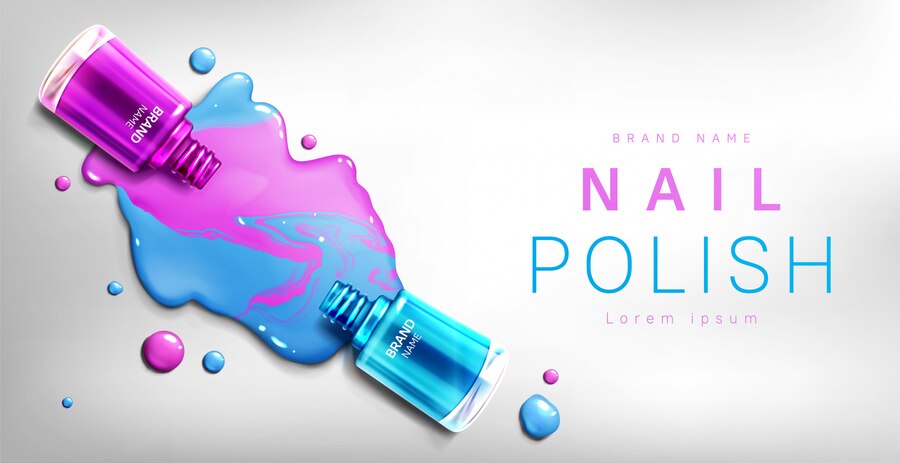10 Genius Ways to Use Nail Polish Remover
.
Introduction
Nail polish remover is a staple in most households, but did you know it has many other practical uses? Acetone-based removers, in particular, are powerful solvents that can help with cleaning, fixing, and DIY projects. In this blog post, we’ll explore 10 genius ways to use nail polish remover in your daily life. Let’s dive in!
1. Remove Sticker Residue
Tired of sticky labels that refuse to come off? Apply a small amount of nail polish remover to the residue, let it sit for a few minutes, and wipe it away effortlessly.

2. Clean Permanent Marker Stains
Accidentally used a permanent marker on a whiteboard or countertop? Dab a cloth in nail polish remover and gently rub the area. The acetone will break down the ink, making it easier to clean.
3. Restore White Shoes

Apply the nail polish remover to the area with super glue and allow it to sit for a few minutes. During this time, the remover will work to break down the glue, softening it and making it easier to remove. Avoid touching or disturbing the area while it soaks, as this will give the solution enough time to dissolve the adhesive effectively. After a few minutes, gently peel off the glue without causing any harm to your skin. Remember to wash your hands thoroughly afterward to remove any leftover residue and keep your skin clean and safe.
4. Dissolve Super Glue
If you find yourself with dried super glue on your fingers, don’t worry. Simply apply a small amount of nail polish remover to the affected area. Allow it to sit for a few minutes to loosen the glue. Once the glue begins to loosen, gently peel it off without causing damage to your skin. Be sure to wash your hands afterward to remove any leftover residue. This method works effectively to dissolve super glue, making it easier to get rid of without causing irritation or harm to your skin.
5. Clean Keyboard Keys

Over time, your keyboard can accumulate dirt and grime, affecting its appearance and functionality. To clean the keys and restore their shine, dip a cotton swab in nail polish remover and gently wipe each key. Be sure to avoid excessive moisture, as too much liquid can damage the keyboard. This simple method helps remove oils, dust, and residue, leaving your keyboard looking fresh and clean. It’s a quick and effective way to maintain a neat workspace and ensure your keys are free from buildup, making typing more comfortable.
6. Remove Paint from Skin
Do you have paint stuck on your hands after a DIY project? Instead of scrubbing harshly, gently rub the area with nail polish remover to dissolve the paint quickly.
7. Polish Metal Surfaces
Acetone works wonders in polishing metal surfaces. Use it to clean stainless steel appliances, jewelry, or even door handles to make them shine like new. Polish metal surfaces to restore their shine, remove tarnish, and protect them from rust and corrosion.

8. Fix Smudged Nail Polish
Smudged your freshly painted nails? No need to start over! Dip a small brush in nail polish remover and gently smooth out the imperfections. Let it dry, then apply a thin layer of polish to blend the area seamlessly. For extra perfection, finish with a clear top coat to add shine and protect your nails from further smudging. This quick fix saves time and keeps your manicure looking flawless without redoing the entire nail!
9. Remove Ink Stains from Clothes
Ink stains can be tough to remove, but nail polish remover can help! Dampen a cotton ball with nail polish remover and gently blot the stain—avoid rubbing, as it may spread. Allow it to sit for a few minutes before rinsing with cold water. Wash the fabric as usual, and check if the stain is gone before drying. This quick trick works best on fresh stains and non-delicate fabrics, restoring your clothes to their original look!
10. Refresh Old Nail Polish Bottles
Nail polish can thicken and become harder to apply over time. To restore its smooth consistency, add a few drops of nail polish remover or a polish thinner into the bottle. Close the lid tightly and shake well to mix. If needed, repeat the process until the polish reaches the desired texture. Be careful not to add too much, as it may affect the formula. This simple trick helps extend the life of your favorite nail polish, making it easy to apply once again!
FAQs
1. Can I use nail polish remover on plastic surfaces?
Be cautious when using acetone on plastic, as it can cause damage. Always test on a small area first.
2. Is non-acetone nail polish remover effective for these hacks?
Non-acetone removers are gentler but may not be as effective in cleaning and dissolving tough stains.
3. Can I use nail polish remover to clean my phone screen?
No, acetone can damage the screen coating. Use a microfiber cloth and gentle screen cleaner instead.
Conclusion
Nail polish remover is more than just a beauty product—it’s a versatile tool for cleaning and fixing everyday issues. From removing stains to restoring items, these genius hacks prove its usefulness. Try these tips and make the most out of your nail polish remover!
